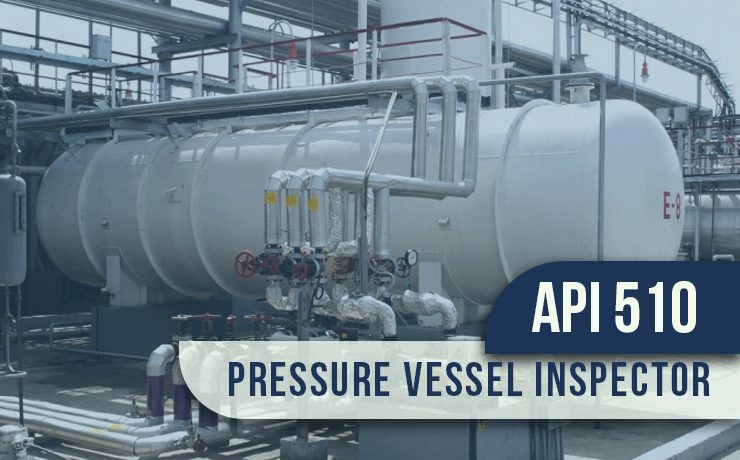During an inspection, the API storage tank inspectors check for signs of corrosion, leaks, and other problems. These problems can lead to a deterioration of the tank’s structural integrity, and can cost thousands of dollars to repair. Luckily, there are a few steps you can take to make sure that your tank is protected against these issues.
Routine inspections
Having routine API storage tank inspections can help you maintain the integrity of your tanks and ensure that your facility is operating safely. If you are looking to save money and reduce the risk of failure, you will want to get these inspections done.
The American Petroleum Institute (API) has a set of inspection standards that are designed for aboveground storage tanks. These inspections are designed to make sure that your tanks are safe and that they are operating at their optimum capacity. If you follow these standards, you will have a more efficient facility and you will be able to continue to run it for years to come.
A typical tank inspection includes a visual inspection of the tank’s external and internal shell, foundation, piping, and secondary containment. The inspector will also check for evidence of leaks and settles. The owner should provide monthly inspection reports.
Routine external inspections look for signs of corrosion, paint coatings, and evidence of leaks or settlement. These inspections are performed by a certified inspector and are required by API 653.
An API 653 inspector must be able to perform both internal and external inspections of your tank. An internal inspection will include a bottom plate thickness measurement, as well as the inspection of the welds and other appurtenances. These inspections are important because they will help determine the corrosion rate of the tank bottom.
An internal inspection can be extended up to 15 years if the corrosion rate is known. This is possible because of the risk-based inspection approach prescribed by API 580.
An inspection will also check for leaks in the bottom of the tank. This is achieved using a magnetic flux leakage tool. This is more accurate than a traditional measurement and it can be used to detect cracks in the shell to bottom welds. The welds should be repaired or replaced in order to maintain the integrity of your tank.
Depending on the materials you store in your tank, you may need to conduct more frequent inspections. You can also use the inspection reports to help detect patterns in the conditions of your tank over time. This will enable you to develop a corrective action plan.
Cathodic protection surveys
Regardless of the type of cathodic protection system installed, the inspectors of a facility should conduct routine inspections to ensure the safety of the tank. In addition, these inspections can help identify problems before they become costly and harmful to the facility.
The primary testing method is the structure-to-soil potential survey. This technique is performed without the reference electrode moving from the site. The potentials of all metallic structures are measured. These potentials are then corrected for temperature. For example, if the temperature is less than 77o F, the observed potential is adjusted accordingly.
Another testing method is the external ultrasonic thickness inspection. This is done by an authorized API inspector. In addition, other considerations include the evaluation of the rectifier’s operation, continuity measurements, and the presence of metallic structures. The designer also needs to consider the presence of a leak detection system.
In addition, the official inspector should follow up on any conditions that arise during the inspection. This includes leaks, shell distortions, and corrosion. If the official inspector is not able to determine the cause of a problem, a cathodic protection expert should perform a retest. This retest must include the presence of continuity and local potentials.
These types of tests are necessary to meet API 653 compliance. During a test, the tester will use high-tech voltmeter to measure the voltages. It is important to have a high internal resistance voltmeter, as it will prevent large errors when measuring the structure-to-soil potential. It is important to have the meter calibrated periodically.
If the meter has fluctuating readings, this means the cathodic protection system is not working properly. The owner of the tank must document the readings in a log book. This will help the inspector identify the source of the problem. If the meter continues to fluctuate, the owner should retest the system.
Cathodic protection surveys should be conducted every five years for externally protected tanks. This is especially true for those with a high corrosion rate. If a cathodic protection system fails, the damage is considerable. In addition, the owner should check the meter levels every sixty days.
API 650 tanks
Using the API 650 storage tank inspections standards is an important step towards ensuring the safety of your tank. This standard was developed to provide minimum requirements for above ground storage tanks. Depending on the type of product stored in the tank, more frequent inspections may be required.
The API 650 inspections standard applies to both the exterior and interior of the tank. The external inspection includes visual inspections and thickness analysis using ultrasonic tests. The internal inspection is conducted by a licensed API inspector. These inspections are performed to assess the structure, foundation, and the external shell of the tank. The inspection should include the average measurement of the tank shell. The final inspection report includes collected data and conclusions. It should also contain recommendations for repairs.
The main purpose of the inspection is to ensure that the tank will continue to function properly in the future. When it is time for an inspection, the tank should be empty and cleaned. The tank bottom should be evaluated to detect environmental damage. If the tank is not protected by cathodic protection, then it should be inspected for cracks and other brittle fractures.
Tanks that store liquids and gases such as nitrogen, oxygen, and helium require additional inspections. These tanks are typically constructed from austenitic duplex stainless steel or carbon steel. They are used in refineries and liquefied gas (LNG) facilities. They can be field erected, but are not designed for refrigeration service.
When determining the frequency of inspections, the factors that must be considered include the type of inspection, the material that is stored in the tank, and the corrosion rate. A risk-based inspection program is used to determine inspection intervals. For example, if the product being stored in the tank is likely to corrode at a high rate, the inspection interval can be extended for up to 15 years.
If the tank is not protected by cathodic or other protection, then it should be inspected at least every two to three years. This can be done by opening the roof access and looking at the tank’s internal components.













































